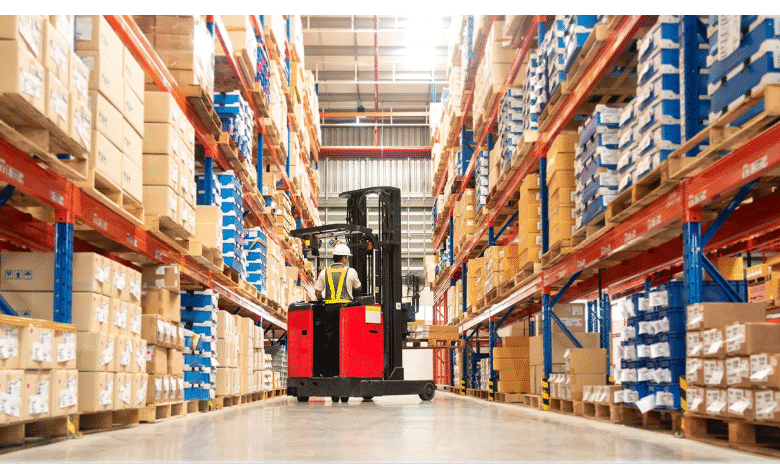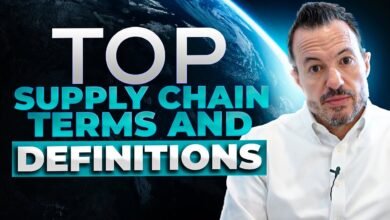Supply Chain
CAPEX vs OPEX in Supply Chain: Key Differences and When to Choose

CAPEX vs OPEX in Supply Chain: Key Differences and When to Choose
Core definitions
- CAPEX (Capital Expenditure): Money invested in long-lived assets that enable operations (assets you own or control). Recognized on the balance sheet and expensed over time via depreciation/amortization.
- OPEX (Operating Expenditure): Day-to-day costs to run the operation. Recognized immediately on the P&L in the period incurred.
Side-by-side comparison
| Dimension | CAPEX | OPEX |
|---|---|---|
| Nature | One-time investment creating/adding to assets | Recurring operating cost |
| Typical SC examples | Building/expanding a DC; racking & mezzanine; conveyors/ASRS/AMRs; forklifts purchased; on-prem WMS/ERP licenses & servers | 3PL fees; transportation line-haul; labor; maintenance contracts; SaaS WMS/TMS; equipment leases/rentals; utilities |
| Accounting | Capitalized, then depreciated | Expensed in period |
| Cash flow | Large upfront; impacts Free Cash Flow at purchase | Spread over time; improves cash timing predictability |
| KPI impact | Increases asset base → may reduce asset turn/ROIC but improves EBITDA (depreciation below EBITDA) | No asset added → higher EBITDA sensitivity (expense above EBITDA); generally better asset turn |
| Flexibility | Lower (locked into asset/technology) | Higher (scale up/down with demand) |
| Risk profile | Tech obsolescence, under-utilization, residual value | Price escalation, vendor lock-in, service performance |
| Governance | Capex committee, ROI/NPV/payback gate reviews | Budget owner discretion; contract governance & SLAs |
| Tax | Depreciation shields over time | Immediate tax deduction (jurisdiction-dependent) |
Note on leases (IFRS 16/ASC 842): Many equipment/real-estate leases now create a right-of-use asset on the balance sheet with lease liabilities; P&L shows depreciation + interest instead of pure OPEX. EBITDA typically improves vs. pre-IFRS-16 accounting, but leverage and asset base rise. Always align with your finance policy.
Supply-chain examples by domain
- Warehousing
- CAPEX: Racking, shuttle/ASRS, AMRs, dock levelers, WMS perpetual license, building fit-out.
- OPEX: 3PL warehousing fees (inbound, storage, outbound), labor, MHE rentals, WMS SaaS subscription, facility utilities and maintenance.
- Transportation
- CAPEX: Buying trucks, trailers, yard tractors, in-cab telematics hardware.
- OPEX: 3PL/4PL transport tariffs, fuel, tolls, driver wages, TMS SaaS, fleet leasing.
- Inventory
- Inventory itself is working capital (a current asset, not OPEX).
- OPEX components: carrying cost (capital charge, storage, insurance, obsolescence, shrink), handling.
- IT & automation
- CAPEX: On-prem servers, fixed scanners/portals, PLCs.
- OPEX: Cloud compute, SaaS (WMS/TMS/YMS), support contracts.
How it affects your KPIs
- EBITDA/Operating Margin:
- CAPEX favors EBITDA (expense recognized as depreciation below EBITDA).
- OPEX reduces EBITDA directly.
- ROIC/ROCE & Asset Turnover:
- CAPEX increases invested capital → pressure on ROIC and asset turns unless productivity gains are strong.
- OPEX keeps the balance sheet lighter → better turns, potentially higher ROIC.
- Cash Conversion Cycle (CCC):
- CAPEX doesn’t enter CCC, but higher automation may reduce cycle time and labor, indirectly improving CCC.
- Unit Cost (per case/order):
- CAPEX can lower steady-state unit costs at high volumes.
- OPEX can track volume closely and avoid high fixed costs at low volumes.
Decision framework (practical)
- Stability of demand & product mix
- Stable/high volume → CAPEX more attractive.
- Volatile/seasonal → OPEX for flexibility.
- Time horizon & tech maturity
- Mature, slow-changing tech (e.g., pallet racking) → CAPEX.
- Fast-evolving tech (e.g., robotics, software) → OPEX/SaaS/lease.
- Total Cost of Ownership (TCO)
- Compare TCO_CAPEX = Purchase + Install + Maintenance + Energy + Labor ± Residual − Productivity gains
vs. TCO_OPEX = Fees (volume-linked) + Indexation + Penalties/SLAs − Productivity gains over the same horizon.
- Compare TCO_CAPEX = Purchase + Install + Maintenance + Energy + Labor ± Residual − Productivity gains
- Financial tests
- NPV/IRR/Payback on CAPEX; sensitivity to utilization, wage inflation, and failure modes.
- For OPEX, model price escalators, minimum volume commitments, and termination terms.
- Operational risk
- Single-point failure (e.g., ASRS outage) → add redundancy or hybrid OPEX buffer.
- Vendor concentration → dual-source or exit clauses.
- Accounting & policy
- Align with capitalization thresholds, lease accounting, depreciation lives, internal hurdle rates.
Quick “rules of thumb”
- Choose CAPEX when: demand is predictable, asset will be >80% utilized for most of its life, and automation removes ≥20–30% of variable cost with payback ≤ 3–4 years.
- Choose OPEX when: demand is uncertain, speed-to-launch matters, or tech could be obsolete in ≤3 years; or when preserving cash/ROIC is a priority.
- Hybrid models work well: e.g., light-CAPEX racking + OPEX AMR subscription; own core DC, outsource overflow; lease MHE, buy racking.
Example scenarios
- New DC with growth uncertainty: start with 3PL (OPEX) and SaaS WMS. Once volumes stabilize, transition to owned site (CAPEX) with targeted automation.
- Forklift fleet refresh: leasing (OPEX/ROU asset) with full-service maintenance can beat purchase when utilization is moderate and downtime risk is costly.
- E-commerce surge: OPEX for pick-to-light/AMR “as-a-service” to absorb peaks; reassess for CAPEX if sustained for ≥12–18 months.




